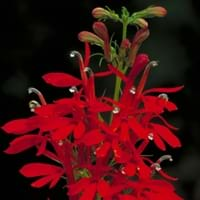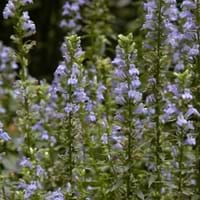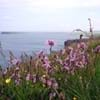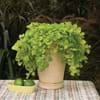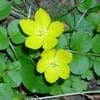Life Span
Annual
Perennial
Origin
North America, Northeastern United States, Mid-Atlantic United States, Southeastern United States, North-Central United States, South-Central United States, Canada
Northeastern United States, Mid-Atlantic United States, Southeastern United States, Central United States, Texas, Canada
Types
Herbaceous perennial
Not available
Habitat
Lakes, Pastures, Prairies, Roadsides, Swamps, Woodlands
Open areas, stream banks, Wet Woods
USDA Hardiness Zone
3-9
4-8
Sunset Zone
1a, 1b, 2a, 2b, 3a, 3b, 4, 5, 6, 7, 14, 15, 16, 17
1a, 1b, 2a, 2b, 3a, 3b, 4, 5, 6, 7, 8, 9, 14, 15, 16, 17
Habit
Clump-Forming
Clump-Forming
Flower Color
Red, Crimson, Dark Red
Blue, Lavender, Blue Violet
Flower Color Modifier
Bicolor
Bicolor
Fruit Color
Brown
Not Available
Leaf Color in Spring
Dark Green
Green, Dark Green
Leaf Color in Summer
Dark Green
Green, Dark Green
Leaf Color in Fall
Purple, Dark Green, Burgundy
Green, Dark Green
Leaf Color in Winter
Light Green
Light Green
Leaf Shape
Lanceolate
Lanceolate
Plant Season
Summer
Summer, Fall
Sunlight
Full Sun, Partial Sun, Partial shade
Full Sun, Partial Sun, Partial shade
Growth Rate
Medium
Medium
Type of Soil
Loam
Clay, Loam
The pH of Soil
Acidic, Neutral, Alkaline
Acidic, Neutral, Alkaline
Soil Drainage
Poorly Drained
Average
Bloom Time
Early Summer, Summer
Summer, Late Summer, Early Fall
Tolerances
Drought
Deer resistant, Shade areas, Wet Site
Where to Plant?
Container, Ground
Ground
How to Plant?
Cuttings, Divison, Seedlings
Divison, Seedlings
Plant Maintenance
Medium
Low
Watering Requirements
Medium
Do not let dry out between waterings, Needs Very high moisture, Requires consistently moist soil
In Summer
Lots of watering
Lots of watering
In Spring
Moderate
Moderate
In Winter
Average Water
Average Water
Soil pH
Acidic, Neutral, Alkaline
Acidic, Neutral, Alkaline
Soil Type
Loam
Clay, Loam
Soil Drainage Capacity
Poorly Drained
Average
Sun Exposure
Full Sun, Partial Sun, Partial shade
Full Sun, Partial Sun, Partial shade
Pruning
Remove damaged leaves, Remove dead branches, Remove dead leaves
Remove damaged leaves, Remove dead branches, Remove dead flowers, Remove dead leaves, Remove deadheads
Fertilizers
All-Purpose Liquid Fertilizer
10-10-10, Balanced liquid fertilizer
Pests and Diseases
Red blotch
Head smut, Rust, Slugs, Snails
Plant Tolerance
Drought
Deer resistant, Shade areas, Wet Site
Flower Petal Number
Single
Single
Foliage Texture
Medium
Medium
Foliage Sheen
Glossy
Matte
Attracts
Butterflies, Insects
Bees, Birds, Butterflies, Hummingbirds
Allergy
Not Available
Skin irritation, Skin rash, Toxic if not prepared properly
Aesthetic Uses
Showy Purposes
Beautification, Cottage Garden, Showy Purposes
Beauty Benefits
Not Available
Skin Problems
Environmental Uses
Air purification
Air purification
Medicinal Uses
Headache, Rheumatism, Stomach pain
Diarrhea, Dysentry, Healing, Stomach pain, Syphilis
Part of Plant Used
Flowers, Leaves, Root
Bark, Flowers, Leaves, Root
Other Uses
Medicinal oil, Showy Purposes
Used as Ornamental plant, Used for its medicinal properties
Used As Indoor Plant
Yes
No
Used As Outdoor Plant
Yes
Yes
Garden Design
Bog Garden, Mixed Border, Water Gardens, Wildflower
Mixed Border, Wildflower
Botanical Name
LOBELIA cardinalis
LOBELIA siphilitica
Common Name
Cardinal Flower
Great blue lobelia, great lobelia
In Hindi
Cardinal Flower
महान ब्लू लोबेलिआ
In German
Cardinal Flower
Great Blue Lobelia
In French
Cardinal Flower
Great Lobelia bleu
In Spanish
Cardinal Flower
Gran Lobelia azul
In Greek
Καρδινάλιος λουλούδι
Μεγάλη Μπλε Lobelia
In Portuguese
Cardinal Flower
Grande Lobelia azul
In Polish
Cardinal Flower
Great Blue Lobelia
In Latin
Cardinalis Flower
Blue Lobelia
Phylum
Tracheophyta
Magnoliophyta
Class
Magnoliopsida
Magnoliopsida
Order
Asterales
Campanulales
Family
Lobeliaceae
Lobeliaceae
Clade
Angiosperms, Asterids, Eudicots
Angiosperms, Asterids, Eudicots
Tribe
Not Available
Not Available
Subfamily
Lobelioideae
Lobelioideae
Importance of Cardinal Flower and Great Blue Lobelia
Want to have the most appropriate plant for your garden? You might want to know the importance of Cardinal Flower and Great Blue Lobelia. Basically, these two plants vary in many aspects. Compare Cardinal Flower and Great Blue Lobelia as they differ in many characteristics such as their life, care, benefits, facts, etc. Every gardener must at least have the slightest clue about the plants he wants to plant in his garden. Compare their benefits, which differ in many ways like facts and uses. The medicinal use of Cardinal Flower is Headache, Rheumatism and Stomach pain whereas of Great Blue Lobelia is Diarrhea, Dysentry, Healing, Stomach pain and Syphilis. Cardinal Flower has beauty benefits as follows: Not Available while Great Blue Lobelia has beauty benefits as follows: Not Available.
Compare Facts of Cardinal Flower vs Great Blue Lobelia
How to choose the best garden plant for your garden depending upon its facts? Here garden plant comparison will help you to solve this query. Compare the facts of Cardinal Flower vs Great Blue Lobelia and know which one to choose. As garden plants have benefits and other uses, allergy is also a major drawback of plants for some people. Allergic reactions of Cardinal Flower are Not Available whereas of Great Blue Lobelia have Skin irritation, Skin rash and Toxic if not prepared properly respectively. Having a fruit bearing plant in your garden can be a plus point of your garden. Cardinal Flower has no showy fruits and Great Blue Lobelia has no showy fruits. Also Cardinal Flower is flowering and Great Blue Lobelia is flowering. You can compare Cardinal Flower and Great Blue Lobelia facts and facts of other plants too.
